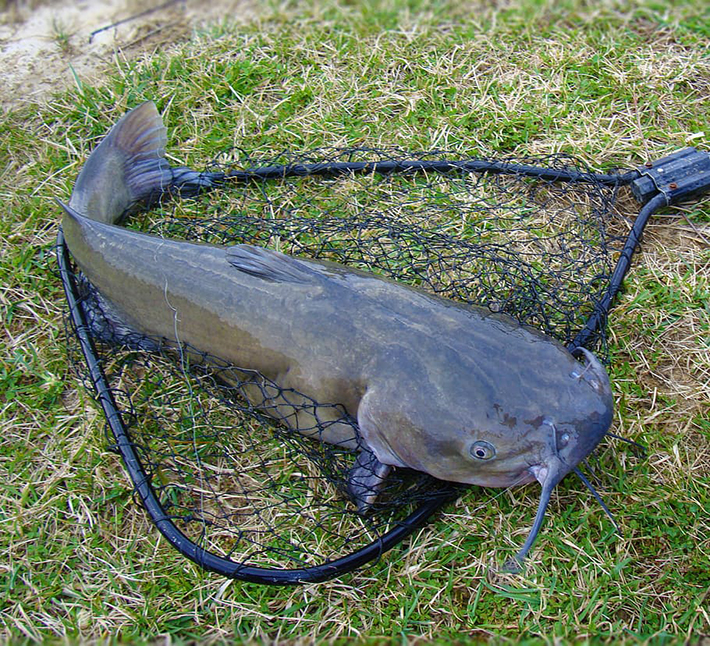
Don’t let summer slip away without heading out to the local fishing hole and casting a line for catfish.
There are plenty of locations to land a catfish, and it’s a great experience for both new and experienced anglers, according to the Georgia Department of Natural Resources’ Wildlife Resources Division (WRD).
“Fishing can be a fun experience for new or young anglers, especially when you target catfish. The gear you need is relatively simple, and catfish are found throughout Georgia so angling locations are plentiful,” says Scott Robinson, WRD Fisheries Management Chief. “And, while catching fish seems like the best part, it’s really the memories being made. I don’t think anyone ever looks back on their life and says, I took my kid fishing too often. So, get out there and make those memories as you Go Fish Georgia!”
Georgia’s public waterways are home to several species of catfish, including channel, white, blue, flathead and bullheads (yellow, brown, snail, spotted and flat). Species that get larger, like blue or flatheads, can reach weights above 50 pounds!
What to Use:
• If targeting channel and white catfish, fisheries biologists recommend eight to 14-pound test line and medium-sized hooks (size 2 to 1/0) under a bobber or fished on the bottom. Best baits for channel, bullheads and white catfish are worms, liver, live minnows, shrimp, cut bait and stink bait.
• For anglers trying to land a large blue or flathead catfish, heavy tackle is a must – large spinning or casting tackle with at least 20 to 50-pound test braid or monofilament line, large hooks (3/0 to 8/0), and heavy weights (1-5 oz) to keep bait on the bottom. Flatheads are ambush predators that prey heavily upon fish, so live or freshly killed fish used as bait will increase your chances. Similarly, freshly caught gizzard shad increases your chances of reeling in a giant blue catfish.
• Other catfish catching methods include trotlines, limb lines, and jug-lines. Regulation info on these methods can be found in the Georgia Hunting and Fishing Regulations and Seasons Guide found at GeorgiaWildlife.com/fishing/angler-resources.
Where to Look:
In general, anglers should target rocky shorelines, rip-rap areas, points and outside bends of rivers or the submerged river channel. Catfish will stay in deep areas or “holes” during the day before roaming the shallows at night for food. When fishing rivers during the day, anglers should look to deep holes containing rocky or woody cover. During dawn, dusk and at night, anglers should concentrate on shallow sandbars, flats, and shoals near the deep holes fished during the day. Catfish, especially flatheads, love holding near downed trees, so look for these on outside bends.
Georgia’s Public Fishing Areas (GeorgiaWildlife.com/allpfas) are great places to target channel catfish, especially as most of them are open 24 hours a day year-round. Looking for additional locations? Check out the Fishing Forecasts webpage for lake and river suggestions (GeorgiaWildlife.com/fishing-forecasts).
When to Go:
Though most species of catfish are active throughout the day, the best summer fishing is at dusk and during the night. Catfish can be caught year-round, with the best bite typically from early spring through the peak of summer. Be prepared to fish multiple areas if you don’t get a bite within 30 minutes.
Visit GoOutdoorsGeorgia.com to purchase a fishing license online or to view a list of retail license vendors or buy a license by phone at 1-800-366-2661.
For more fishing information, visit GeorgiaWildlife.com/fishing/angler-resources.


Bulloch Public Safety
Several Arrested in Bulloch for Narcotics Trafficking After Citizen Complaints

Bulloch Public Safety
12/19/2025 Booking Report for Bulloch County

Chattooga Local News
Trump signs executive order reclassifing marijuana

Bulloch Public Safety
12/18/2025 Booking Report for Bulloch County

Bulloch Public Safety
11/24/2025 Booking Report for Bulloch County

Bulloch Public Safety
12/12/2025 Booking Report for Bulloch County

Bulloch Public Safety
12/01/2025 Booking Report for Bulloch County

Bulloch Public Safety
12/11/2025 Booking Report for Bulloch County

Bulloch Public Safety
12/16/2025 Booking Report for Bulloch County





